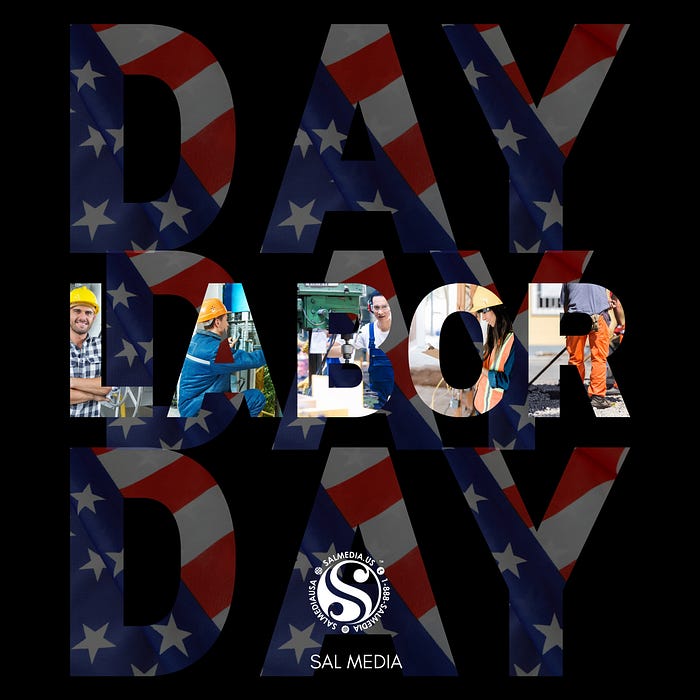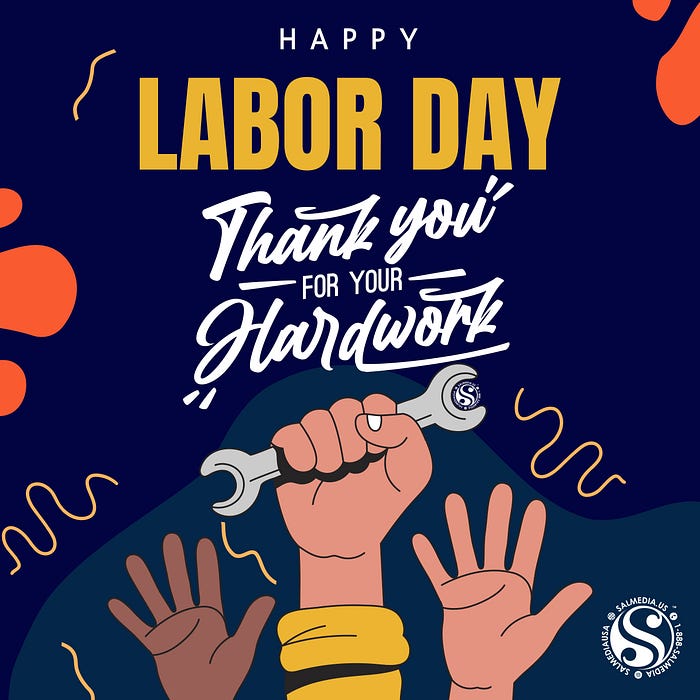
Love and Tradition: Pakistani Wedding Spectacle
In a splendid celebration of love, culture, and tradition, the picturesque Pakistani Muslim wedding of Anees and Hina unfolded over...
Read More >>
Labor Day, observed on the first Monday of September, is more than just a long weekend or the unofficial end of summer. It is a day set aside to honor the contributions of American workers and their role in building the nation’s economic and social fabric. This year, on September 2nd, millions of Americans gathered to celebrate the holiday, enjoying parades, barbecues, and various community events across the country.
The roots of Labor Day date back to the late 19th century, during a time of significant labor unrest in the United States. The Industrial Revolution had transformed the nation’s economy, but it also brought with it harsh working conditions, long hours, and low wages. Workers across various industries began to organize and demand better treatment, fair pay, and reasonable working hours. The labor movement grew as unions formed to fight for the rights of workers, giving rise to the need for a day to celebrate their efforts.
The first unofficial Labor Day celebration took place on September 5, 1882, in New York City, organized by the Central Labor Union. Thousands of workers took unpaid time off to participate in the event, which featured a parade and a festival. The demonstration was a powerful statement of unity and strength, showcasing the growing influence of the labor movement in the U.S. Two years later, in 1884, the Central Labor Union proposed making the first Monday of September an annual event, which eventually laid the groundwork for a national holiday.
Labor Day became an official federal holiday in 1894, thanks to the efforts of President Grover Cleveland. The decision came in the wake of the Pullman Strike, a nationwide railroad strike that resulted in violence and the deaths of workers at the hands of federal troops. To appease the labor movement and restore peace, Congress rushed through legislation to establish Labor Day as a national holiday. President Cleveland signed the bill into law just days after the strike ended, cementing the holiday’s place in American history.
At its core, Labor Day is a tribute to the labor movement and the contributions of workers who fought for better working conditions, fair wages, and shorter workdays. Their efforts led to the establishment of the eight-hour workday, child labor laws, and workplace safety standards that many enjoy today. It also paved the way for the rise of unions, which continue to advocate for workers’ rights in industries across the country.
Over the years, Labor Day has evolved into a broader celebration of American workers, with a focus on family and community. For many, it marks the end of summer and the beginning of a new school year, but its significance as a holiday for workers remains. Parades, speeches, and other community events are often held to remind people of the struggles and achievements of workers throughout history.
As labor issues continue to evolve in the modern workforce, including debates over minimum wage, gig economy rights, and workplace safety, Labor Day serves as a reminder of the ongoing importance of workers’ rights. It is a day to reflect on the progress that has been made and the challenges that remain. The holiday also highlights the value of unity and collective action in addressing these challenges.
In 2024, as in years past, Labor Day continues to stand as a symbol of American resilience, perseverance, and the tireless efforts of workers who have shaped the nation’s past, present, and future. It is a celebration of the American workforce, and a recognition of the sacrifices and contributions that have built the country into what it is today.
For more information on Sal Media, check out our website and our Instagram page.

In a splendid celebration of love, culture, and tradition, the picturesque Pakistani Muslim wedding of Anees and Hina unfolded over...
Read More >>Labor Day, observed on the first Monday of September, is more than just a long weekend or the unofficial end...
Read More >>Introduction New York City, famously known as the melting pot of cultures and traditions, hosts an extraordinary event each year...
Read More >>On a day that New York Fashion Week attendees will long remember, February 11th, 2024, Anthony Rubio unveiled a collection...
Read More >>On September 21, 2024, the Kannada Koota of New York (KKNY) hosted its annual Ganesha Habba event, a grand celebration of culture, tradition, and...
Read More >>Everything you need to know about shutter speed from a professional sports photographer. Shutter speed is widely considered one of...
Read More >>5 basic things you need to know about sports photography from a professional with over a decade of experience. My...
Read More >>Everything you need to know about shutter speed from a professional sports photographer. Shutter speed is widely considered one of...
Read More >>How to make your camera work for you at night, as told by a professional sports photographer. For many people,...
Read More >>